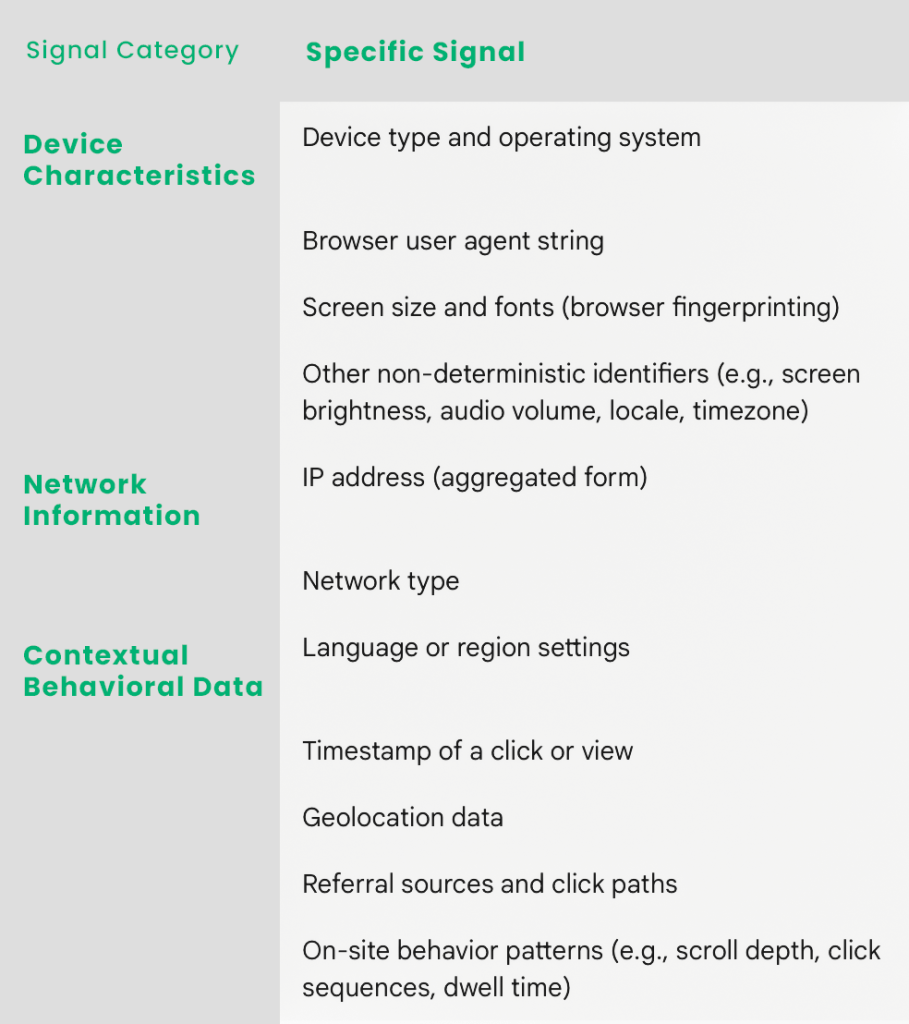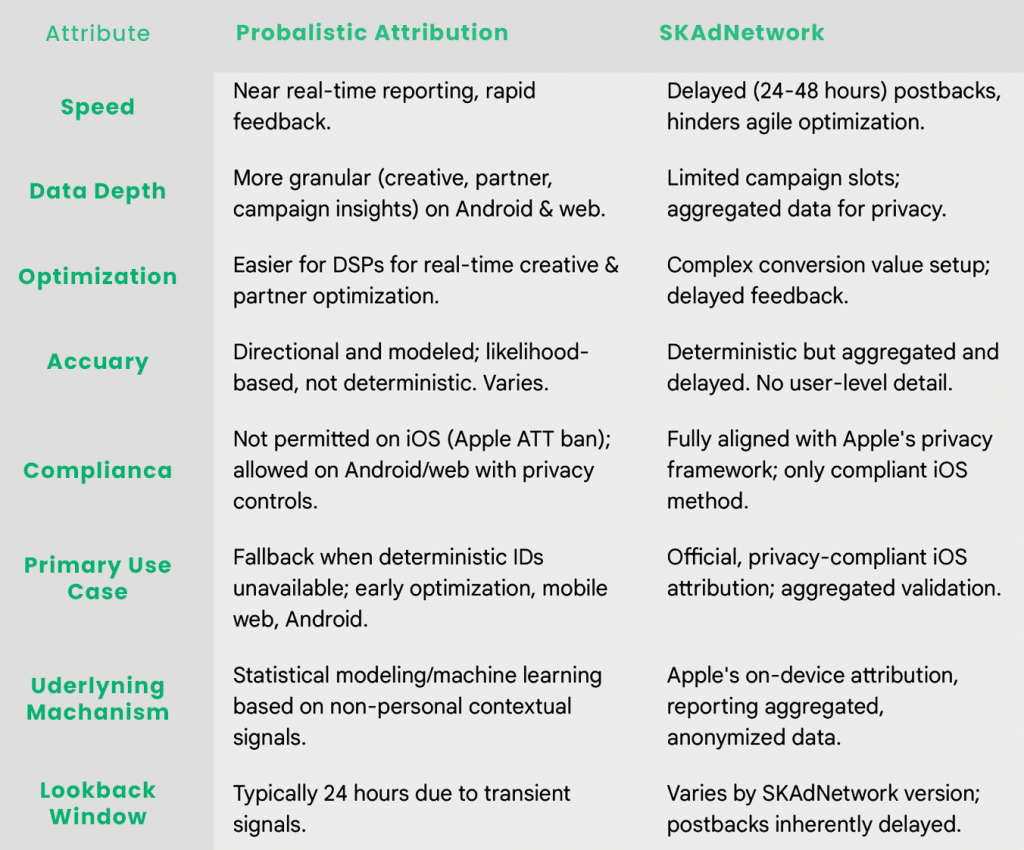Probabilistic attribution has faced increased scrutiny and restrictions, but it hasn’t disappeared. In fact, for many mobile marketers operating on channels where it’s still permitted and privacy-compliant, it remains a powerful tool for campaign measurement, optimization, and scaling.
This post will break down how probabilistic attribution works, where it’s still viable today, and why it continues to deliver value in a post-IDFA world where deterministic data is harder to come by.
1. Introduction to Mobile Attribution in a Privacy-First Era
The mobile marketing ecosystem is transforming due to escalating user privacy concerns and stringent regulations. This shift fundamentally alters campaign measurement, moving away from reliance on deterministic identifiers like IDFA on iOS or GAID on Android.
Complex customer journeys across multiple platforms further challenge accurate measurement.Despite these, robust attribution is indispensable for optimizing ad spend, measuring campaign efficacy, and calculating Return on Ad Spend (ROAS). It identifies effective marketing efforts, understands user behavior, and ensures efficient resource allocation. Traditional, rule-based models often oversimplify journeys and are vulnerable to cookie restrictions.
In this context, privacy-respecting measurement approaches are paramount. Probabilistic attribution has emerged as a crucial methodology, adapting to constraints on traditional deterministic tracking. While scrutinized, it remains a powerful tool for campaign measurement, optimization, and scaling on permitted and privacy-compliant channels.
The tightening of privacy regulations, like Apple’s App Tracking Transparency (ATT) policy, reduces deterministic identifier availability, creating a data vacuum. Here, even directional insights from probabilistic attribution become indispensable when precise tracking is limited. This forces a strategic shift: accepting some uncertainty for timely, actionable data, prioritizing directional guidance over absolute precision.
2. Understanding Probabilistic Attribution: Mechanics and Principles
Probabilistic attribution estimates user action sources (e.g., app installs) without deterministic identifiers like advertising IDs. Unlike direct matches, it uses statistical modeling and machine learning to infer the likelihood a marketing touchpoint influenced a conversion, providing a likelihood-based estimate.
It collects non-personal contextual signals from a user’s device or session. These signals, not unique on their own, are aggregated to generate a statistical correlation between an ad interaction and a subsequent action. Machine learning models then process these signals, analyzing millions of customer journeys to assign probabilities.
Key non-personal contextual signals for a statistical “fingerprint” include:

Due to reliance on these transient identifiers, probabilistic attribution is less accurate than deterministic methods, serving as a fallback when unique IDs are unavailable. Its shorter lookback window (typically 24 hours) is a significant limitation, as signal accuracy drops due to frequent changes.
3. Advantages and Strategic Value of Probabilistic Attribution
Despite its inherent limitations, probabilistic attribution offers distinct advantages, underscoring its continued strategic value in the evolving mobile marketing landscape.
- Faster Insights & Agile Optimization: Provides near real-time reporting, crucial for quick feedback to iterate rapidly on creatives or channels during testing or scaling. This enables early spend decisions and dynamic campaign optimization, maintaining operational agility.
- Essential Fallback Coverage: Offers crucial fallback for sources where deterministic identifiers are unavailable or limited, useful for:
- Mobile web campaigns
- Email-driven user acquisition
- Organic app downloads from landing pages
- Android app campaigns where GAID is limited or unavailable
- Cross-device tracking without user logins
- Connected TV (CTV) and PC/console attribution
- Supports Campaign Scaling & Performance: Provides valuable “signal density” and directional data, enabling marketers to scale campaigns, especially in high-CPI verticals, while awaiting delayed SKAdNetwork postbacks. This immediate feedback contributes to efficient budget allocation and potentially higher ROAS.
- Broader Visibility in Privacy-Restricted Environments: Infers customer journeys using data patterns and statistical modeling across large datasets, filling data gaps where deterministic methods fail and allowing understanding of overall trends.
- Privacy-Preserving Analytics: When handled responsibly and avoiding PII, it can qualify as “privacy-preserving analytics,” aiding compliance with data protection standards.
4. Limitations and Industry Concerns
Despite its strategic advantages, probabilistic attribution faces several significant limitations and industry concerns.
- Lower Accuracy: Inherently less accurate than deterministic methods, providing likelihood-based estimates. Accuracy varies, leading to “hidden costs of uncertainty” and misallocated marketing spend.
- Shorter Lookback Window: Accuracy drops significantly after ~24 hours due to transient signals like IP addresses. Most systems limit attribution to one day.
- Advertiser/Legal Hesitation: Larger organizations are cautious due to compliance concerns (especially Apple’s rules) and perceived lower accuracy, understandable given potential penalties.
- Computational Complexity & Interpretability: Models are resource-intensive and results can be difficult to understand without a strong statistical background.
- Reliance on Data Volume: Effectiveness depends on large datasets. Limitations on third-party data make effective use challenging, as models thrive on extensive data for patterns.
The regulatory environment contributes to accuracy challenges. Apple’s explicit ban on iOS under ATT directly impacts its applicability. This highlights a tension: stricter privacy regulations can limit or prohibit attribution. Conversely, where allowed (Android, web), it offers broader coverage but with an inherent error. Marketers must accept that a single, universally accurate method is elusive, necessitating diversified, platform-specific strategies.
5. Probabilistic Attribution vs. SKAdNetwork: A Comparative Analysis
In the post-IDFA world, understanding the distinctions between probabilistic attribution and Apple’s SKAdNetwork is crucial for mobile marketers. These methodologies represent different approaches to campaign measurement in a privacy-first era.
The following table provides a detailed comparison across several key attributes:

This comparison highlights fundamental trade-offs. Probabilistic attribution excels in speed and granularity, valuable for agile, early-stage campaign adjustments, especially on Android and web. Immediate feedback allows quick decisions and dynamic optimization.
Conversely, SKAdNetwork is the definitive, privacy-compliant solution for iOS, offering deterministic (though aggregated) attribution directly from Apple. Its design prioritizes user privacy, introducing delays and reducing immediate insights. Many UA professionals don’t solely rely on SKAdNetwork due to delayed data and discrepancies.
7. Final Thoughts
Probabilistic attribution remains a valuable, often indispensable, tool in mobile marketing, especially in the privacy-first era. Its core strength is providing rapid directional insights and serving as a critical fallback when deterministic identifiers are unavailable. This speed is crucial for early campaign optimization and scaling on Android and mobile web.
The future of mobile measurement will continue to balance granular attribution with user privacy, likely shifting towards more aggregated data and privacy-enhancing APIs.
Ultimately, a blended approach is most effective: leveraging probabilistic data for agile, short-term insights, combined with deterministic data (where available) and aggregated, privacy-compliant solutions like SKAdNetwork for broader validation. This strategy allows marketers to optimize performance, ensure compliance, and understand customer journeys in a complex, privacy-conscious digital environment.













